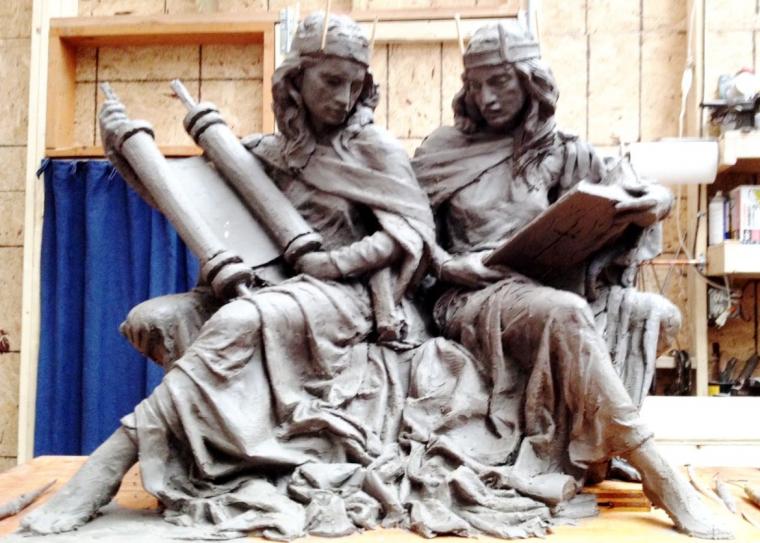
“A Tale of Two Ladies: Achievements and Challenges in the Christian-Jewish Relationship" at the Moline Public Library -- July 10.
Monday, July 10, 6:30 p.m.
Moline Public Library, 3210 41st Street, Moline IL
Presented by Dr. Debbie Weissman, the fascinating live program A Tale of Two Ladies: Achievements and Challenges in the Christian-Jewish Relationship will be hosted by the Moline Public Library on July 10, its focus devoted to Ecclesia and Synagoga, the embodied representations of Christianity and Judaism in medieval and early modern church architecture and artwork.
Ecclesia and Synagoga, meaning "Church and Synagogue" in Latin, often appear sculpted as large figures on either side of a church portal, as in the most famous examples of those at Strasbourg Cathedral. They may also be found standing on either side of the cross in scenes of the Crucifixion, especially in Romanesque art, and less frequently in a variety of other contexts. The two female figures are usually young and attractive; Ecclesia is generally adorned with a crown, chalice, and cross-topped staff, looking confidently forward. In contrast, Synagoga is blindfolded and drooping, carrying a broken lance (possibly an allusion to the Holy Lance that stabbed Christ) and the Tablets of the Law or Torah scrolls that may even be slipping from her hand. In images of the Crucifixion, Ecclesia may hold a chalice that catches the blood spurting from the side of Christ; she often holds the chalice as an attribute in other contexts. Attributes sometimes carried by Synagoga include a sheep or goat or just its head, signifying Old Testament sacrifice, in contrast to Ecclesia's chalice which represents the Christian Eucharist. If not blindfolded, Synagoga usually looks down. Ecclesia has an earlier history, and in medieval art Synagoga occasionally appears alone in various contexts, but the pair, or Ecclesia by herself, are far more common.
The first appearance of such figures in a Crucifixion is in a historiated initial in the Drogo Sacramentary of c. 830, but though Ecclesia already has most of her usual features already present, the figure representing the Jews or the Old Covenant is here a seated white-haired old man. The pair, now with a female Jewish partner, are then found in several later Carolingian carved ivory relief panels of the Crucifixion for book covers, dating from around 870, and remain common in miniatures and various small works until the 10th century. They are then less common in Crucifixions in the 11th century, but reappear in the 12th century in a more strongly contrasted way that emphasizes the defeat of Synagoga; it is at this point that a blindfolded Synagoga with a broken lance becomes usual. The figures continue to be found in Crucifixions until the early 14th century, and occur later in various contexts but are increasingly less common. The surviving portal figures mainly date from the 13th century.
A Tale of Two Ladies presenter Dr. Debbie Weissman is a veteran Jewish educator and expert in Christian-Jewish relations. American by birth, she is a long-time resident of Jerusalem and has served two terms as president of the International Council of Christians and Jews. Her teaching and consultation on interfaith issues has taken her to five continents, while in 2017, she published Memoirs of a Hopeful Pessimist: A Life of Activism through Dialogue.
A Tale of Two Ladies: Achievements and Challenges in the Christian-Jewish Relationship will be presented on July 10, participation in the 6:30 p.m. Lecture is free, and more information is available by calling (309)524-247 and visiting MolineLibrary.com.










